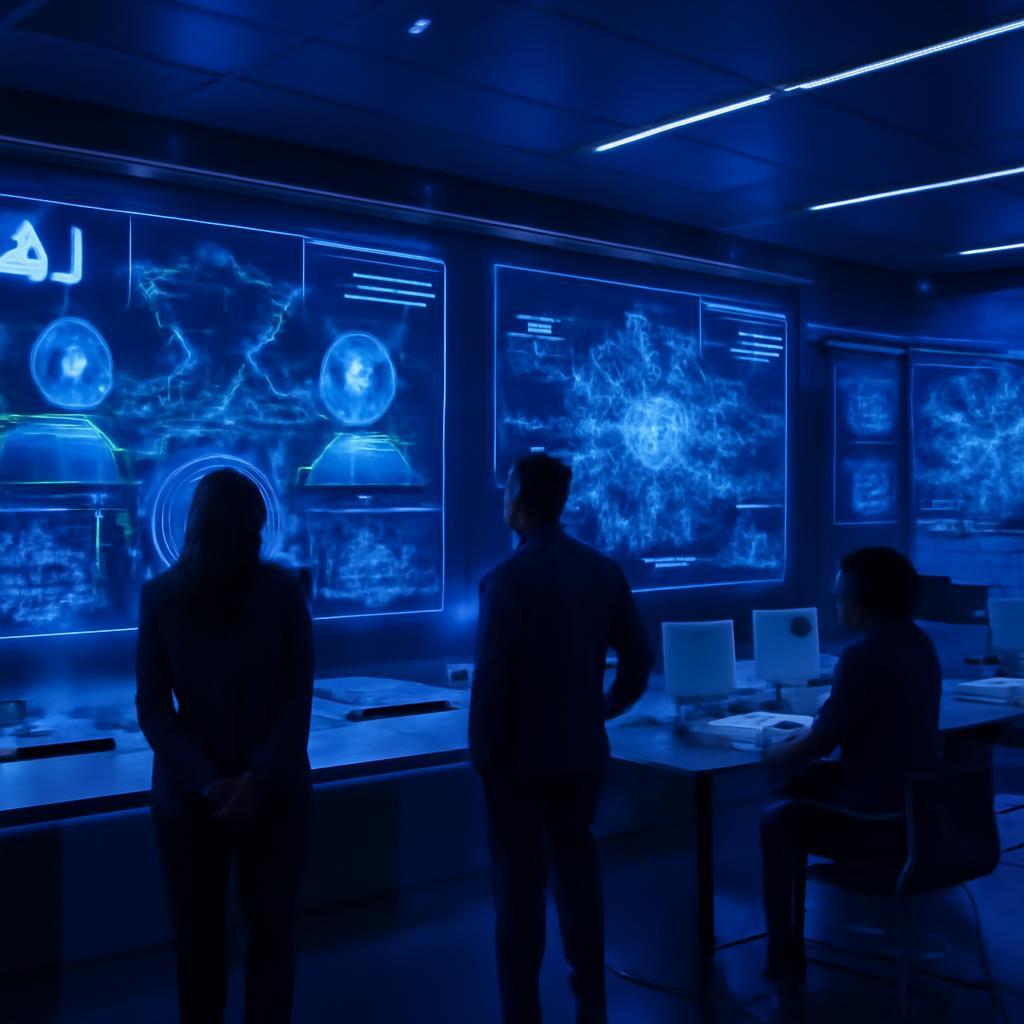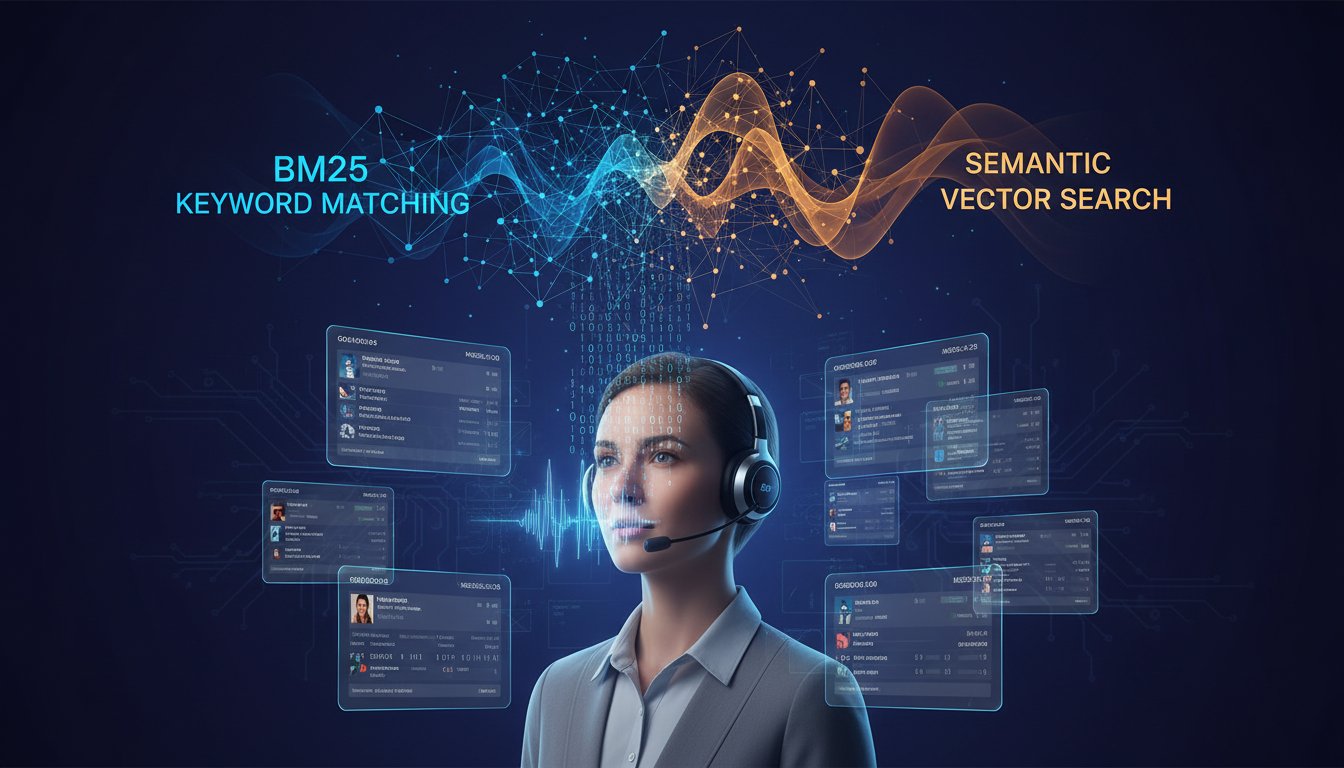The enterprise AI landscape is experiencing a seismic shift. While most organizations have experimented with basic RAG implementations, the real challenge lies in scaling these systems for production environments where multiple AI agents must work together seamlessly. Recent developments in multi-agent architectures are fundamentally changing how enterprises approach retrieval-augmented generation, moving beyond simple question-answering systems to sophisticated AI ecosystems that can handle complex, multi-step reasoning tasks.
The emergence of multi-agent RAG systems represents more than just a technical evolution—it’s a strategic imperative for organizations serious about AI at scale. Companies like Microsoft, Google, and emerging players like Lightning AI are investing heavily in enterprise-grade solutions that combine autonomous AI agents with advanced retrieval mechanisms. This convergence is creating unprecedented opportunities for organizations to build AI systems that don’t just retrieve information, but actively reason, collaborate, and execute complex workflows.
What makes multi-agent RAG particularly compelling is its ability to address the fundamental limitations of single-agent systems. Where traditional RAG implementations often struggle with complex queries requiring multiple data sources or reasoning steps, multi-agent architectures can distribute tasks across specialized agents, each optimized for specific domains or functions. This approach mirrors how human teams collaborate, with different specialists contributing their expertise to solve complex problems.
In this comprehensive guide, we’ll explore the technical foundations of multi-agent RAG systems, examine real-world implementation patterns, and provide practical frameworks for building production-ready solutions. Whether you’re scaling an existing RAG implementation or designing a new enterprise AI architecture, understanding multi-agent patterns will be crucial for staying competitive in the rapidly evolving AI landscape.
Understanding Multi-Agent RAG Architecture
Multi-agent RAG systems fundamentally differ from traditional single-agent implementations through their distributed approach to information retrieval and processing. Instead of relying on a single large language model to handle all aspects of a query, these systems deploy multiple specialized agents, each with distinct roles and capabilities.
The core architecture typically consists of three primary agent types: Coordinator Agents that manage workflow orchestration and task distribution, Retrieval Agents that specialize in accessing and filtering information from specific data sources, and Reasoning Agents that focus on synthesis, analysis, and decision-making. This separation of concerns allows each agent to be optimized for its specific function, resulting in better overall system performance.
Coordinator Agents serve as the system’s central nervous system, analyzing incoming queries to determine the appropriate combination of agents needed for resolution. These agents maintain context across the entire conversation flow and ensure that information gathered by various retrieval agents is properly synthesized before final response generation. Advanced coordinator implementations use reinforcement learning techniques to optimize agent selection and task routing based on historical performance data.
Retrieval Agents are specialized for specific data domains or source types. For example, an enterprise might deploy separate agents for structured database queries, unstructured document retrieval, real-time data feeds, and external API integrations. Each retrieval agent can be fine-tuned for its specific data domain, using specialized embedding models, custom indexing strategies, and domain-specific preprocessing pipelines.
Reasoning Agents focus on higher-order cognitive tasks like analysis, comparison, and synthesis. These agents often employ different model architectures optimized for reasoning tasks, such as chain-of-thought prompting, constitutional AI techniques, or specialized reasoning frameworks like RAPL (Rationalized Supervision for Planning and Learning).
The communication layer between agents represents another critical architectural component. Modern implementations use message-passing protocols that allow agents to share context, request specific information, and collaborate on complex tasks. This inter-agent communication is typically managed through specialized middleware that handles message routing, context preservation, and failure recovery.
Implementation Patterns for Enterprise Deployment
Successful enterprise multi-agent RAG implementations follow several proven patterns that address the unique requirements of production environments. These patterns emphasize reliability, scalability, and maintainability while ensuring that the system can handle the complexity and volume demands of real-world enterprise use cases.
The Hub-and-Spoke Pattern centralizes coordination through a single master agent while allowing specialized agents to operate independently. This pattern works particularly well for organizations with diverse data sources and use cases, as it provides clear governance and control while maintaining flexibility. The central hub maintains conversation context, manages authentication and authorization, and ensures that responses meet enterprise compliance requirements.
Implementing this pattern requires careful attention to the hub agent’s design, as it becomes a potential bottleneck and single point of failure. Leading implementations use redundant hub agents with state synchronization and implement circuit breaker patterns to gracefully handle agent failures. The hub also serves as the primary integration point with enterprise identity management systems, ensuring that each agent request respects organizational access controls.
The Pipeline Pattern structures agents in sequential workflows where each agent’s output becomes the input for subsequent agents in the chain. This approach works well for complex analytical tasks that require multiple processing stages, such as financial analysis, legal document review, or technical troubleshooting workflows.
Pipeline implementations require sophisticated error handling and rollback mechanisms, as failures in any stage can compromise the entire workflow. Successful deployments implement checkpoint systems that allow workflows to resume from specific stages and maintain audit trails for compliance and debugging purposes.
The Swarm Intelligence Pattern allows multiple agents to work in parallel on different aspects of the same problem, with their results aggregated and synthesized at the end. This pattern excels in scenarios requiring comprehensive analysis from multiple perspectives, such as market research, competitive analysis, or multi-faceted problem solving.
Swarm implementations must address the challenge of result consistency and conflict resolution when agents produce contradictory information. Advanced systems use consensus mechanisms, confidence scoring, and human-in-the-loop validation to ensure result quality.
Security and Governance Considerations
Enterprise multi-agent RAG systems introduce unique security challenges that require specialized approaches beyond traditional application security measures. The distributed nature of these systems creates multiple attack surfaces and requires comprehensive security frameworks that address both inter-agent communication and external data access.
Authorization Infrastructure becomes critical when multiple agents access different data sources with varying sensitivity levels. Recent developments, such as AuthZed’s specialized RAG security tools, provide fine-grained access control mechanisms that can enforce permissions at the agent level. These systems implement role-based access control (RBAC) and attribute-based access control (ABAC) patterns that ensure each agent can only access data appropriate to its function and the requesting user’s permissions.
Implementing proper authorization requires mapping enterprise identity systems to agent architectures, often through service mesh patterns that provide consistent authentication and authorization across all agent communications. This approach ensures that even if individual agents are compromised, the blast radius is limited by the authorization framework.
Data Lineage and Audit Trails are essential for enterprise compliance and debugging. Multi-agent systems must maintain detailed logs of which agents accessed what data sources, how information was processed and transformed, and which agents contributed to final responses. This level of visibility is crucial for meeting regulatory requirements and troubleshooting system behavior.
Advanced implementations use blockchain-based audit trails or immutable logging systems to ensure that audit data cannot be tampered with. These systems also implement real-time monitoring that can detect anomalous agent behavior and trigger security responses.
Privacy-Preserving Techniques become more complex in multi-agent environments where information must be shared between agents while maintaining data privacy. Techniques like differential privacy, federated learning, and homomorphic encryption can be applied at the agent level to ensure that sensitive information is protected even during inter-agent communication.
Performance Optimization and Scaling Strategies
Scaling multi-agent RAG systems for enterprise workloads requires careful attention to both horizontal and vertical scaling strategies. Unlike single-agent systems where scaling primarily involves adding more compute resources, multi-agent systems must balance agent distribution, communication overhead, and coordination complexity.
Agent Load Balancing strategies must account for the specialized nature of different agents and their varying computational requirements. Retrieval agents typically require different resource profiles than reasoning agents, with retrieval agents being more I/O intensive while reasoning agents require more computational power. Effective load balancing uses agent-specific metrics and can dynamically adjust agent allocation based on workload patterns.
Implementations often use container orchestration platforms like Kubernetes with custom controllers that understand agent roles and can make intelligent scaling decisions. These systems monitor agent performance metrics, queue depths, and response times to automatically scale agent populations up or down based on demand.
Caching and State Management become more complex in multi-agent environments where multiple agents may need access to shared state or cached results. Distributed caching strategies must balance consistency requirements with performance needs, often using eventual consistency models for non-critical data and strong consistency for critical shared state.
Advanced systems implement multi-level caching hierarchies where frequently accessed information is cached at multiple levels, from individual agent caches to shared cluster-level caches. These systems also use intelligent cache invalidation strategies that understand the relationships between different data sources and can efficiently update cached data when source information changes.
Communication Optimization focuses on minimizing the overhead of inter-agent communication while maintaining the collaborative benefits of multi-agent architectures. Techniques include message batching, compression, and intelligent routing that minimizes network hops between agents.
High-performance implementations use specialized message buses designed for agent communication, with features like automatic failover, message ordering guarantees, and built-in monitoring. These systems also implement communication patterns that reduce the need for synchronous agent interactions, using asynchronous message passing and event-driven architectures wherever possible.
Monitoring and Observability Framework
Operating multi-agent RAG systems in production requires sophisticated monitoring and observability capabilities that go beyond traditional application monitoring. The distributed nature of these systems creates complex dependency chains and interaction patterns that require specialized tooling and approaches.
Agent Performance Metrics must capture both individual agent performance and system-wide collaborative effectiveness. Key metrics include agent response times, task completion rates, resource utilization, and inter-agent communication latencies. However, traditional metrics miss the collaborative aspects that make multi-agent systems valuable.
Advanced monitoring systems track emergent system behaviors such as collaboration effectiveness, task distribution efficiency, and system adaptability to changing workloads. These metrics help operations teams understand how well the agent ecosystem is functioning as a whole, not just how individual components are performing.
Distributed Tracing becomes essential for understanding request flows through multi-agent systems. Each user query may trigger interactions between multiple agents, with complex dependency chains and parallel processing streams. Effective tracing systems capture the complete request journey, including agent selection decisions, data retrieval patterns, and reasoning chains.
Implementations typically use distributed tracing frameworks like OpenTelemetry with custom instrumentation that understands agent interactions. These systems provide visual representations of request flows and can identify bottlenecks, failure points, and optimization opportunities in the agent collaboration patterns.
Anomaly Detection in multi-agent systems must account for the complex interaction patterns between agents. Simple threshold-based alerting is insufficient when system behavior emerges from agent interactions rather than individual component performance. Machine learning-based anomaly detection systems can learn normal collaboration patterns and identify when agent interactions deviate from expected behaviors.
These systems often use graph-based analysis techniques that model agent interactions as networks and detect anomalies in communication patterns, task distribution, or collaboration effectiveness.
Future Trends and Strategic Considerations
The multi-agent RAG landscape is evolving rapidly, with several emerging trends that will shape the future of enterprise AI implementations. Understanding these trends is crucial for organizations planning long-term AI strategies and technology investments.
Agentic AI Integration represents the convergence of autonomous AI agents with retrieval-augmented generation capabilities. This trend moves beyond simple query-response patterns toward AI systems that can autonomously plan, execute, and adapt complex workflows. Enterprise implementations are beginning to explore scenarios where AI agents can independently research problems, propose solutions, and even implement changes within controlled environments.
This evolution requires fundamental changes in how organizations think about AI governance and control. Systems that can autonomously make decisions and take actions require robust safety mechanisms, clear operational boundaries, and sophisticated monitoring capabilities.
Knowledge Graph Integration is becoming increasingly sophisticated, with new frameworks like RAPL addressing the traditional limitations of vector-based retrieval through graph-based reasoning. These systems combine the semantic richness of knowledge graphs with the flexibility of large language models, creating more nuanced and contextually aware AI systems.
Enterprise implementations are exploring hybrid approaches that maintain both vector databases for semantic similarity and knowledge graphs for structured reasoning. This dual approach allows systems to handle both fuzzy semantic queries and precise logical reasoning within the same architecture.
Edge and Hybrid Deployment Models are emerging as organizations seek to balance the benefits of cloud-scale AI with data privacy and latency requirements. Multi-agent architectures are particularly well-suited to hybrid deployments where different agents can run in different environments based on their data access requirements and computational needs.
These deployment models require sophisticated orchestration capabilities that can manage agent placement, data synchronization, and communication across different environments while maintaining security and performance requirements.
The future of enterprise AI lies in systems that can seamlessly blend human and artificial intelligence, with multi-agent RAG serving as the foundation for these collaborative intelligent systems. Organizations that master these architectures today will be well-positioned to capitalize on the next wave of AI innovations.
As we look toward the future of enterprise AI, multi-agent RAG systems represent a fundamental shift from simple automation tools to sophisticated intelligent collaborators. The technical patterns and implementation strategies outlined in this guide provide a roadmap for organizations ready to embrace this transformation. However, success requires more than just technical implementation—it demands a strategic approach that aligns AI capabilities with business objectives and organizational culture.
The organizations that will thrive in the AI-driven future are those that view multi-agent RAG not as a technology deployment, but as an opportunity to reimagine how work gets done. By building systems that can truly collaborate, reason, and adapt, these organizations are creating the foundation for sustained competitive advantage in an increasingly AI-driven world. The question isn’t whether your organization should adopt multi-agent RAG systems, but how quickly you can begin the journey toward more intelligent, collaborative, and capable AI architectures.




